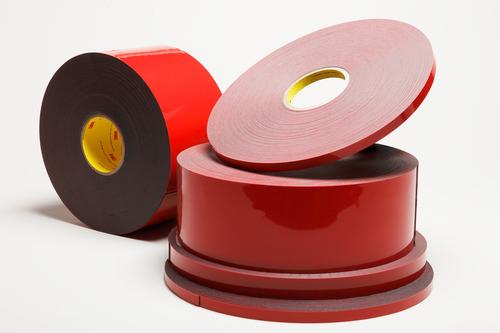Adhesives Get Tougher, Stronger, and More Versatile
Engineers have more to pick from performance-wise when it comes to both structural and non-structural adhesives for many industries. New technologies for joining dissimilar materials can also reduce the need for fasteners and improve welds.
February 20, 2015
As more types of structural and non-structural materials appear in systems from cars to planes to industrial machines, joining them securely and reliably is getting complicated. Adhesive and raw materials suppliers are working to come up with new technologies for joining dissimilar materials that can be easily integrated into high-volume production lines, reduce the need for fasteners, and improve welds. Many adhesives are becoming more resistant to temperature extremes, chemicals and corrosion, and providing better strength, stability, rigidity and/or structural integrity.
Automotive adhesives aren't the only kind by a long chalk, but there are lots of them. Automotive uses have some of the toughest performance requirements, and fitting any new material into the assembly of production cars is especially difficult. Suppliers in this area include 3M, DELO, Dow Automotive Systems, and LORD. Makers of high-temperature-resistant adhesives for uses such as industrial and aerospace include DELO, LORD and Master Bond. DELO and Master Bond also make flame-retardant adhesives and ones that cure at extremely low temperatures, while Huntsman and Master Bond target aerospace & defense and electronics. Adhesives for dressings and wound care, as well as other medical applications, is a growing area where Bayer MaterialScience has come up with materials, and 3M and Master Bond each has several adhesive products. While Fabrico doesn't make adhesives, it does provide materials converting services for wound-care materials and medical-grade adhesives for devices and diagnostic equipment.

Non-structural adhesives can attach plastic components to materials whose lower surface energy (LSE) make it difficult to stick things to them, as well as to LSE surfaces coated by new paint systems that are easier to clean and more scratch resistant. 3M's EX4500 line of acrylic foam tape primerless bonding products is aimed at medium surface energy substrates such as acrylic, acrylonitrile butadiene styrene (ABS), acrylonitrile ethylene styrene (AES), acrylonitrile styrene acrylate (ASA), polycarbonate (PC), and PC+ABS, as well as a variety of paints including carbamate, epoxy/acid powder, and 2K urethane.
(Source: 3M)
In the automotive industry, several overarching trends influence OEM's selection of materials, said Patrick Fischer, 3M's global attachment R&D leader. These include improved fuel efficiency, CO2 reduction, and weight reduction; warranty and recall reduction; improved quality; increased use of electronics and sensors; cleaner, more sustainable processes with improved throughput; global suppliers that can accommodate global platforms; and adhesives for changing paint systems. The choice of material substrate affects how and when adhesives are used. Each material has characteristics that must be taken into consideration when deciding how to bond them together, such as surface energy, finished appearance, corrosion, and stress load.
"As you move away from traditional steel for lightweighting, for example, you have thinner gauge as one issue, and adhesives can be used as a backing material for stiffening," said Fischer. "Whether you use film, tape, or liquid adhesives, you get a distributed bond line instead of the point stresses made by fasteners." That's also true for many lightweight materials: rivets or traditional fasteners just can't be used, and adhesives not only make it possible to bond them but also provide a smoother finished appearance. Mixing aluminum and other metals brings galvanic corrosion problems, which adhesives can solve.
Compared to spot-welded construction, structural adhesives distribute stress loads more evenly and can improve vehicle crash-worthiness by acting as a buffer that has less overall rigidity. They are being used to reduce noise, vibration, and harshness (NVH) in cars, and since they help make a stiffer frame also improve vehicle performance in rollovers. Because holes don't need to be drilled or punched, more design flexibility can be gotten from the same platform, as well as installing different trim packages on the same sheet metal without expensive tooling or additional rework. The use of adhesives can also make it easier to make fixes throughout the vehicle production process.
Aside from structural adhesives for lighter-weight materials, fuel efficiency is also being improved by attaching front and rear windscreens with 1K polyurethane adhesives, which provide both a sealing and a holding function. This bonding method allows larger panes of glass to be attached instead of heavier steel. "Even on weather sealing products like the sealing foam around doors, there are tapes instead of mechanical fasteners for attaching those," said Fischer. "They can reduce high-frequency noise in the passenger compartment."
Other non-structural adhesives can attach plastic components to materials whose lower surface energy (LSE) make it difficult to stick things to them, as well as to LSE surfaces coated by new paint systems that are easier to clean and more scratch resistant. 3M has a new line of acrylic foam tape primerless bonding products for these uses, aimed at medium surface energy substrates such as acrylic, acrylonitrile butadiene styrene (ABS), acrylonitrile ethylene styrene (AES), acrylonitrile styrene acrylate (ASA), polycarbonate (PC), and PC+ABS, and a variety of paints.
In cooperation with Dow Automotive Systems, LORD Corporation has introduced a crash-durable, original equipment-quality structural adhesive for most metal and alloy substrates. Fusor 2098 is based on Dow Automotive's BETAMATE 2098 structural adhesive. It requires little preparation, adheres to a wide range of base substrates like aluminum and steel, has a working time of 90 minutes, and weld-through ability within 60 minutes.
(Source: LORD Corporation)
Some automotive adhesives are made specifically for bonding metals. For example, LORD Corporation sells adhesives and primers for bonding cured rubber to metal substrates. In cooperation with Dow Automotive, LORD has introduced Fusor 2098, a crash-durable, original equipment-quality structural adhesive for substrates like aluminum and steel. It's based on one of Dow Automotive's BETAMATE structural adhesives, requires little preparation, adheres to a wide range of base substrates like aluminum and steel, has a working time of 90 minutes and weld-through ability within 60 minutes.
About the Author(s)
You May Also Like




